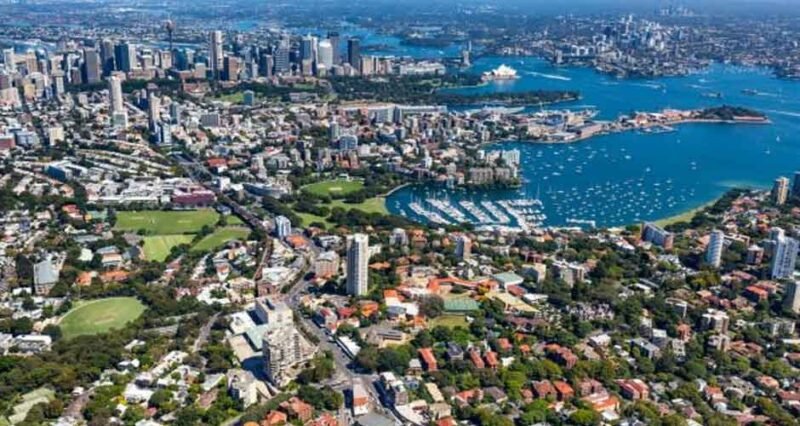
In the dynamic landscape of Australian real estate, innovation stands as a paramount force shaping the industry’s trajectory. This article delves into the transformative innovations that have emerged, revolutionising the property development sector throughout the vast Australian continent.
Digital Disruption: PropTech Revolution
The dawn of the 21st century ushered in a wave of digital transformation, and the real estate sector has been no exception. Property developers in Australia have harnessed the power of PropTech (Property Technology) to streamline processes and enhance the overall customer experience.
Virtual Property Tours: Gone are the days when potential buyers or renters had to visit properties physically. Virtual property tours, facilitated by 3D technology and augmented reality, enable prospective clients to explore properties from the comfort of their screens. This innovation has not only simplified property viewing but has also minimised physical foot traffic, especially during challenging times like the COVID-19 pandemic.
Blockchain in Property Transactions: Blockchain technology has found its way into the heart of real estate transactions. Its implementation ensures secure, transparent, and tamper-proof property deals, thereby enhancing trust between all parties involved. Smart contracts, a feature of blockchain, have streamlined and automated payment and contract processes.
Sustainable Living: Eco-Friendly Developments
In an era of increasing environmental consciousness, sustainable property development has taken centre stage in Australia. Developers have integrated eco-friendly solutions into their projects, aligning with the nation’s commitment to reducing carbon emissions.
Energy-Energy-efficient buildings stand as a hallmark of contemporary property development in Australia. These structures strategically incorporate sustainable features like solar panels, energy-efficient lighting systems, and advanced insulation materials. The integration of these elements not only aligns with environmental conservation goals but also yields substantial benefits for property occupants.
By harnessing solar energy, these buildings reduce their reliance on conventional power sources, mitigating carbon emissions and fostering a greener environment. Energy-efficient lighting further optimises electricity consumption, enhancing cost savings for residents and businesses occupying these spaces. Meanwhile, superior insulation contributes to temperature regulation, ensuring comfort and reducing the need for excessive heating or cooling, thus bolstering energy efficiency and overall sustainability.
Green Spaces and Biodiversity: Property developers are now allocating space for green areas within their projects, fostering biodiversity and improving the quality of life for residents. These green spaces serve as communal hubs and promote a healthier urban environment.
Innovative Architectural Design
Australia’s real estate landscape is dotted with architectural marvels that redefine urban living. The country’s diverse geography has inspired innovative design concepts, harmonising contemporary aesthetics with natural surroundings.
Skyline-Altering Skyscrapers: Australian cities boast an array of awe-inspiring skyscrapers that redefine urban skylines. These architectural wonders not only serve as residential or commercial hubs but also contribute to the nation’s urban identity.
Biophilic Design: Property developers in Australia are increasingly embracing biophilic design principles, integrating natural elements such as green walls, indoor gardens, and natural light into building design. This approach not only enhances aesthetics but also promotes well-being and productivity.
Community-Centric Developments
Australian property developers are increasingly focused on creating communities rather than just buildings. The concept of community-centric development prioritises residents’ well-being and fosters a sense of belonging.
Integrated Amenities: Modern developments include a wide range of amenities like gyms, swimming pools, communal gardens, and co-working spaces. These amenities enhance residents’ quality of life, providing convenience and social engagement.
Mixed-Use Developments: Mixed-use properties combine residential, commercial, and retail spaces within the same complex. This innovative approach not only enhances convenience but also reduces the need for extensive commutes, contributing to sustainability.
The Rise of Co-Living and Co-Working Spaces
In major Australian cities, co-living and co-working spaces have gained significant popularity. These innovative concepts offer flexible and communal living and working arrangements.
Co-Living Communities: Co-living spaces provide a cost-effective and flexible housing solution, particularly for young professionals and students. They promote a sense of community and often include shared facilities and social events.
Co-Working Hubs: Co-working spaces have increased across Australia, offering professionals a flexible and collaborative environment to work, network, and share ideas. These hubs cater to the evolving work preferences of modern employees.
Challenges and Opportunities
While innovation has propelled the Australian real estate sector forward, it also presents challenges. Cybersecurity concerns in PropTech, sustainable development costs, and the need for continued innovation in the face of changing demographics are just a few of the industry’s ongoing challenges.
Nonetheless, Australian property developers are well-positioned to navigate these challenges. The nation’s commitment to innovation, sustainability, and community-building ensures a bright future for the real estate sector.
In Conclusion
Innovation continues to be the driving force behind Australia’s ever-evolving real estate landscape. From tech advancements to sustainable living initiatives and community-centric developments, property developers across the nation are setting new standards and shaping the future of Australian real estate. As they continue to explore innovative avenues, Australia’s real estate industry remains an exciting and dynamic field for both developers and residents alike.


